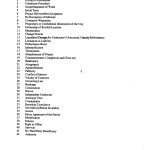
Contract documents between the City of Oakland and Science Applications International Corporation (SAIC) for construction of the Oakland Domain Awareness Center.

The Cardinals’ Commission welcomes the publication of the first Annual Report of the Istituto per le Opere di Religione (IOR). Since the first Vatican City State law on anti-money laundering (AML) came into force on 1 April 2011, the IOR has embarked on a course of reform, of which transparency is a key element. The reform process led to the appointment of the Pontifical Commission by the Holy Father on 24 June 2013, and will result in giving the IOR a new direction, as was done in 1942 and in 1990. It is important to remember that the IOR’s reason for existing is to serve the Catholic Church, in particular its works of charity and its missionary activities, by safeguarding assets and providing payment services.
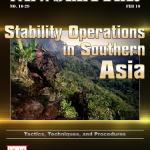
The Army is currently engaged in two fights in southwest Asia. However, future conflicts could possibly be brewing throughout all of south and southeast Asia. The largest Islamic country in the world is not in the Middle East but is in Asia: Indonesia with approximately 197 million Muslims. And throughout southern Asia, insurgency and radicalization is on the rise. At a recent conference in Bangladesh, Major General (Retired) A.N.M. Muniruzzaman of the Bangladesh Institute of Peace and Security Studies announced south Asia is now the “epicenter for global terrorism.” Not one of the attendees from Bangladesh, India, Pakistan, Sri Lanka, Nepal, the United States, Canada, Germany, Norway, Spain, Australia, New Zealand, and Singapore disagreed with him.

The U.S. Army, Pacific Command Chemical, Biological, Radiological, Nuclear, and High Yield Explosives Division and the 71st Chemical Company recently redeployed from Japan in support of Operation Tomodachi. Their efforts provide the center of gravity for this collection effort. This document will strive to highlight and capture some best practices and issues requiring further study by the U.S. Army Chemical, Biological, Radiological, and Nuclear School and other units deploying to similar operations.
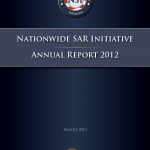
Over the past year, the NSI PMO has continued its implementation efforts and outreach to NSI stakeholders to help ensure that law enforcement and homeland security partners are afforded another tool to help identify and prevent terrorism and other related criminal activity. The ongoing collaboration among DOJ, DHS, the FBI, SLTT partners, and the National Network of Fusion Centers has strengthened, allowing the NSI to expand its nationwide information sharing capability. As of March 2013, 73 fusion centers have met the requirements outlined by the NSI PMO to be fully NSI-Operational—an increase of 5 centers from the same time last year—and all 78 fusion centers now maintain the capability to contribute and share suspicious activity reports through the Shared Space or eGuardian. This expansion of the NSI has allowed the Federated Search Tool to be accessed by more trained users—increasing the number of searches to more than 76,400—and more than 25,900 Information Sharing Environment (ISE)-SARs had been submitted and shared by the end of March 2013. Further, with the support of the National Network of Fusion Centers, 46 states and the District of Columbia are participating in statewide implementation of the NSI; implementation efforts are currently under way in Guam, Puerto Rico, and the U.S. Virgin Islands to ensure a strengthened nationwide capacity for sharing ISE-SAR information.
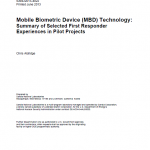
Mobile biometric devices (MBDs) capable of both enrolling individuals in databases and performing identification checks of subjects in the field are seen as an important capability for military, law enforcement, and homeland security operations. The technology is advancing rapidly. The Department of Homeland Security Science and Technology Directorate through an Interagency Agreement with Sandia sponsored a series of pilot projects to obtain information for the first responder law enforcement community on further identification of requirements for mobile biometric device technology. Working with 62 different jurisdictions, including components of the Department of Homeland Security, Sandia delivered a series of reports on user operation of state-of-the-art mobile biometric devices. These reports included feedback information on MBD usage in both operational and exercise scenarios. The findings and conclusions of the project address both the limitations and possibilities of MBD technology to improve operations. Evidence of these possibilities can be found in the adoption of this technology by many agencies today and the cooperation of several law enforcement agencies in both participating in the pilot efforts and sharing of information about their own experiences in efforts undertaken separately.
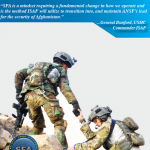
This guide is designed to provide NATO partners and troop contributing nations (TCNs) participating as part of the International Security Assistance Forces (ISAF) a common understanding of Security Force Assistance (SFA) activities. It provides a summary of the ISAF SFA concept as well as guidance and information concerning SFA activities, countering the insider threat, mission critical tasks, and training requirements in support of Afghan National Security Forces (ANSF).
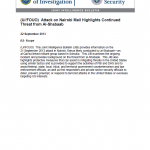
This Joint Intelligence Bulletin (JIB) provides information on the 21 September 2013 attack in Nairobi, Kenya likely conducted by al-Shabaab—an al-Qai‘da linked militant group based in Somalia. This JIB examines the ongoing incident and provides background on the threat from al-Shabaab. This JIB also highlights protective measures that can assist in mitigating threats in the United States using similar tactics and is provided to support the activities of FBI and DHS and to assist federal, state, local, tribal, and territorial government counterterrorism and law enforcement officials, as well as first responders and private sector security officials to deter, prevent, preempt, or respond to terrorist attacks in the United States or overseas targeting US interests.
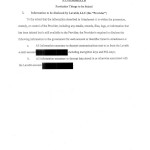
Court documents related to the U.S. government’s efforts to force Lavabit LLC, an encrypted email provider used by Edward Snowden, to hand over encryption keys to decode all secure traffic flowing through the site. The documents were originally obtained and released by Kevin Poulsen of Wired.com after being unsealed by a judge on October 2, 2013.
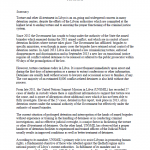
From late 2011, the United Nations Support Mission in Libya (UNSMIL) has recorded 27 cases of deaths in custody where there is significant information to suggest that torture was the cause, and is aware of allegations about additional cases which it has not been able to fully investigate. Eleven of the 27 cases, detailed in this report, took place in 2013, all in detention centres under the nominal authority of the Government but effectively under the authority of armed brigades.
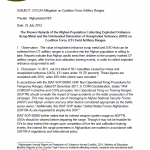
The value of exploded ordnance scrap metal and UXO that can be collected from CF artillery ranges is a lucrative risk the Afghan population is willing to take. Reports indicate that Afghan adults send their children to the properly marked CF artillery ranges, after live fire and calibration training events, in order to collect exploded ordnance scrap metal to sell.
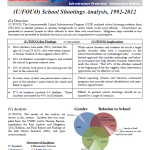
The Commonwealth Critical Infrastructure Program (CCIP) analyzed school shooting incidents from 1992-2012 to identify patterns in attacker backgrounds or tactics which could assist officials. Observations are presented in summary format to allow officials to draw their own conclusions. Mitigation steps included in this document are presented to facilitate discussion and are not comprehensive or prescriptive.

This handbook provides pre-doctrinal guidance on the planning, execution, and assessment of joint integrated persistent surveillance (JIPS) by a joint task force (JTF) and its components. Significant prior work has been done in support of persistent intelligence, surveillance, and reconnaissance (ISR) and much of the information in this handbook was gleaned from that data. However, the scope of this handbook pertains to the subset of persistent surveillance: the processes which contribute to creating a persistent surveillance strategy and those required for executing persistent surveillance missions. The document serves as a bridge between current best practices in the field and incorporation of value-added ideas in joint doctrine.
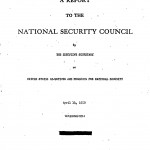
A report produced by the National Security Council Study Group headed by Paul Nitze in 1950. NSC-68 is considered to be one of the most significant documents in the history of the U.S. national security apparatus, defining goals, values, and functions of U.S. national security policy throughout the Cold War and beyond. Historian Michael J. Hogan, scholar of U.S. foreign policy and former fellow at the Harry S. Truman Presidential Library, has described the document as the “bible of American national security policy.”
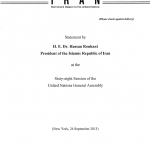
Our world today is replete with fear and hope; fear of war and hostile regional and global relations; fear of deadly confrontation of religious, ethnic and national identities; fear of institutionalization of violence and extremism; fear of poverty and destructive discrimination; fear of decay and destruction of life-sustaining resources; fear of disregard for human dignity and rights; and fear of neglect of morality. Alongside these fears, however, there are new hopes; the hope of universal acceptance by the people and the elite all across the globe of “yes to peace and no to war”; and the hope of preference of dialogue over conflict, and moderation over extremism.